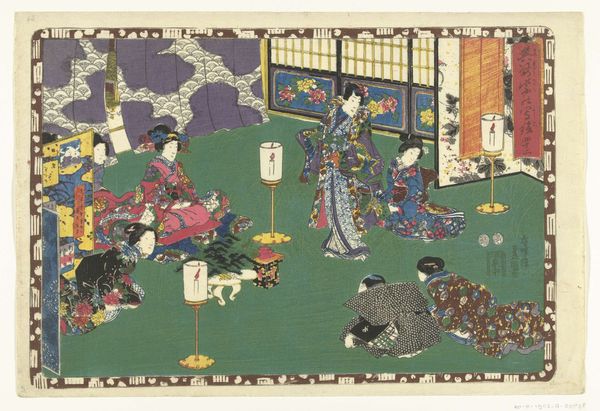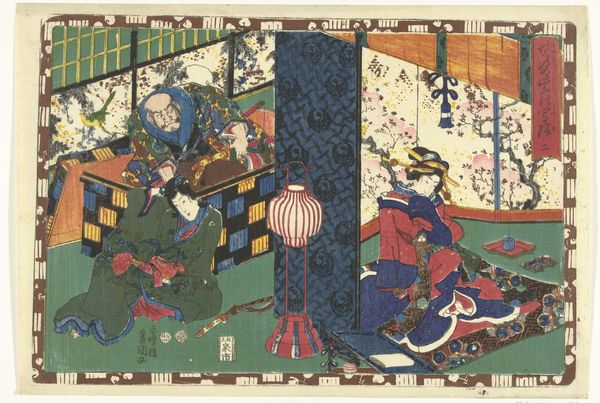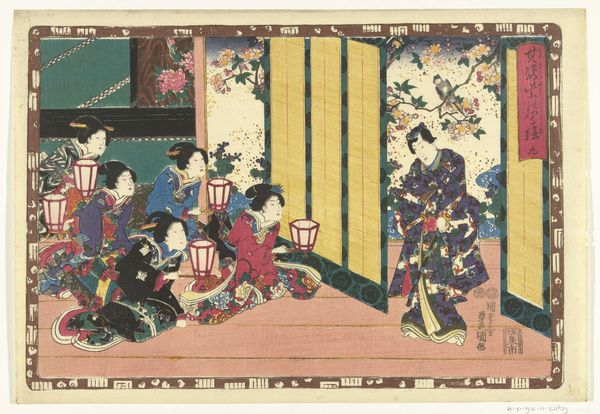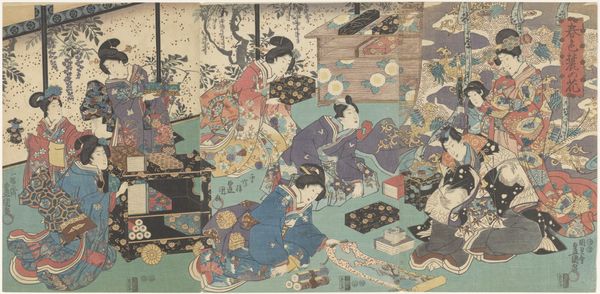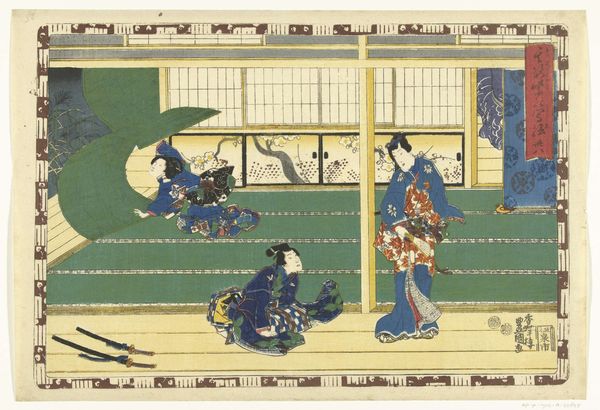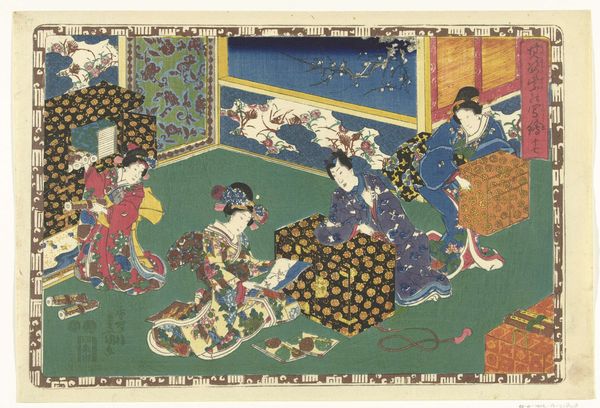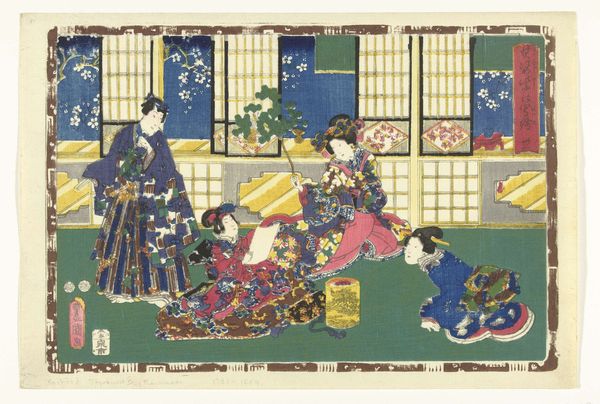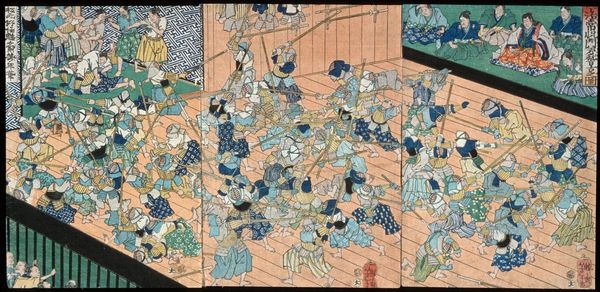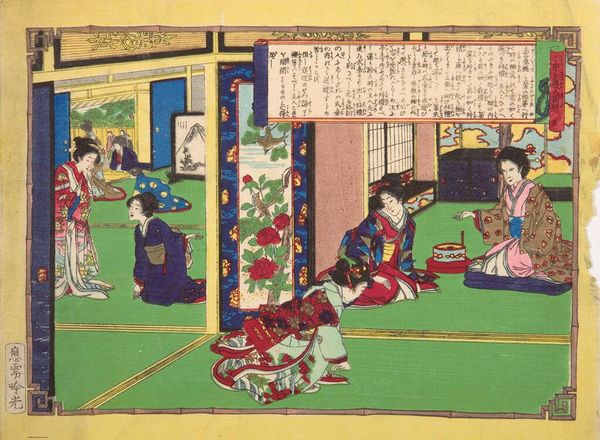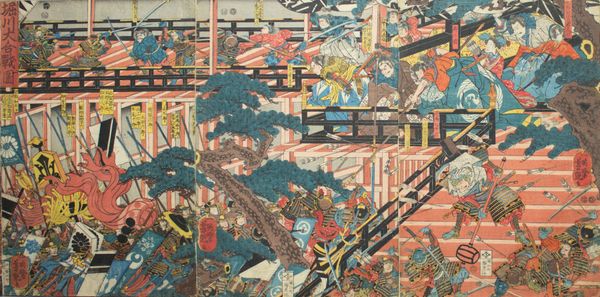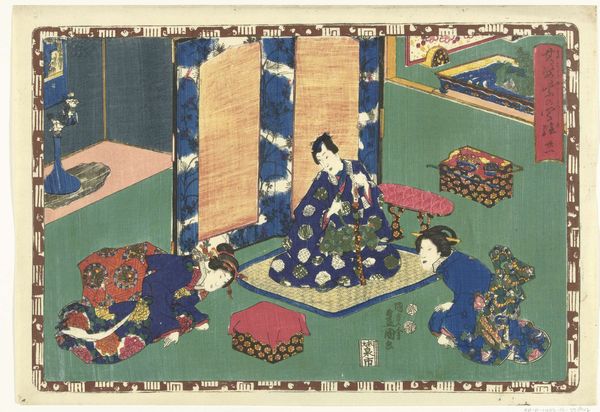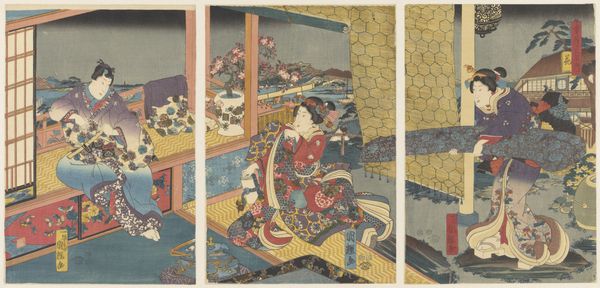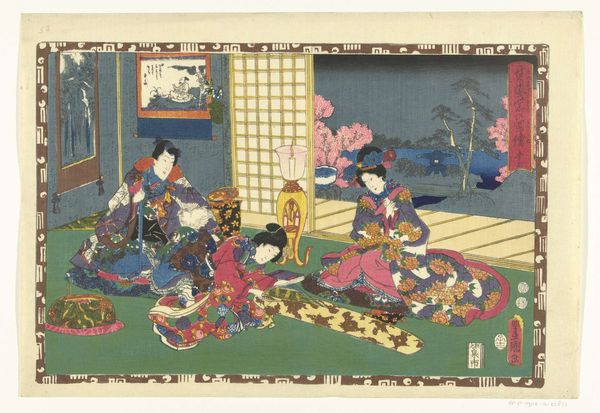
print, woodblock-print
#
portrait
# print
#
asian-art
#
ukiyo-e
#
woodblock-print
#
genre-painting
Dimensions: height 265 mm, width 382 mm
Copyright: Rijks Museum: Open Domain
Editor: This is Utagawa Kunisada's "Hoofdstuk 23" from 1849-1850, a woodblock print now at the Rijksmuseum. It feels like a glimpse into a very intimate domestic scene; women and children gathered, almost staged, yet very inviting. What do you see in this piece? Curator: I see a meticulously constructed narrative deeply embedded in the social and cultural fabric of 19th-century Japan. These Ukiyo-e prints weren't just decorative; they actively participated in constructing and reinforcing social norms, especially around women. Look at how the women are positioned, their roles seemingly defined by domesticity and leisure. Editor: Do you mean like, their kimonos and the way they're sitting is coded somehow? Curator: Precisely! Their elaborate clothing and carefully arranged postures speak volumes about status and expectation. The print participates in the "good wife, wise mother" ideology – roles intensely debated through a feminist lens even today. The genre painting shows us so much about gendered space, familial relationships, and even the politics of display. The room, a stage. Notice how the screen covered with flowers in the background is actually creating a beautiful set-up with depth to convey these gender expectations? What could it be implying with that visual trick? Editor: So it's not just a pretty picture, but a visual statement about gender and society? It’s almost unsettling how composed they are. Curator: Exactly. The arrangement is not necessarily harmonious, as each actor has their own place. I wonder, thinking about power dynamics within the household, if their gaze expresses both conformity and something slightly rebellious beneath the surface. Editor: I hadn't considered the quiet defiance within conformity. Now, when I look again, I notice it. Curator: Right? Art can reinforce but also subtly subvert, creating spaces for re-interpretation and re-existence. These women were likely consumers of such imagery as well, and could thus become critics of the images made about them. It’s interesting to think about this woodblock in such terms, almost 200 years later!
Comments
No comments
Be the first to comment and join the conversation on the ultimate creative platform.
